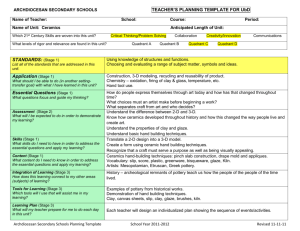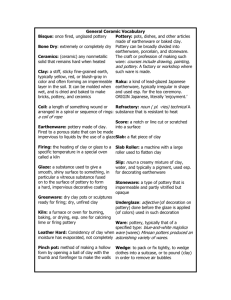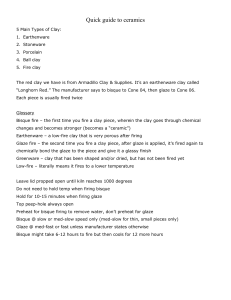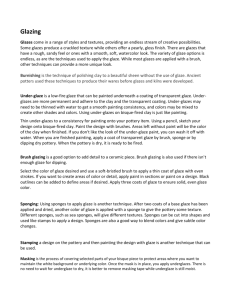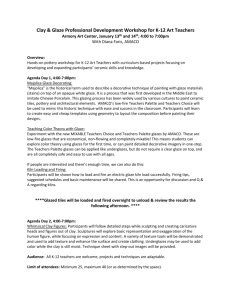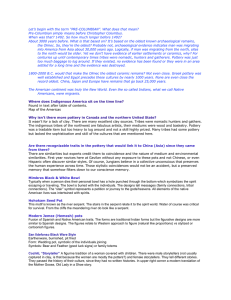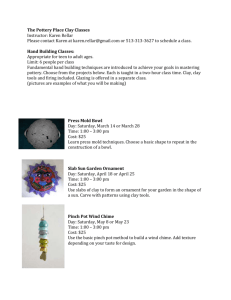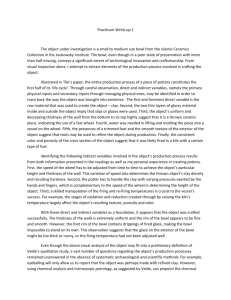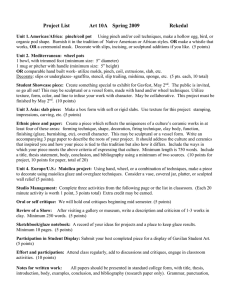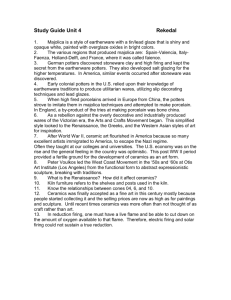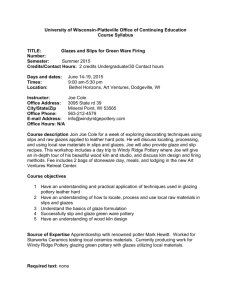Tin-GlazedEarthenware
advertisement
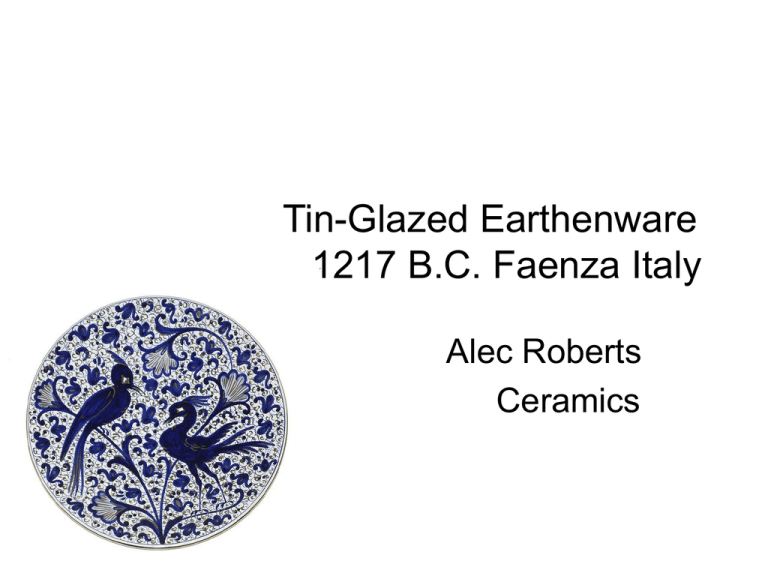
Tin-Glazed Earthenware 1217 B.C. Faenza Italy Alec Roberts Ceramics Key Points • Tin-glazed pottery is a majolica pottery covered in glaze containing tin oxide which is white, shiny and solid. • The pottery body is usually made of red or buff colored earthenware and the white glaze. • Earthenware is pottery made of clay fired which can be made solid to liquids by the use of a glaze. • Majolica is typically brightly painted over an solid white background glaze. Key Facts • Tin-glazed earthenware, was always usually made in a workshop in a families homes in Faenza Italy , where they had all the materials. • Materials/How it was made - 40% ball wet mud/dirt, 28% kaolin – a soft white clay for fillers, 32% quartz hard colorless material that is shiny. • Purpose/Function – These are plates/bowl for putting object in or on for inside a home. They are decorative items also. Key Facts/History • Texture – smooth/glossy, because of the white glaze and it is soft. • Shape – a round plate, slate or bowl • Each plate, bowl or slate that is made, always has a picture or symbol that means something special or can tell a story.
